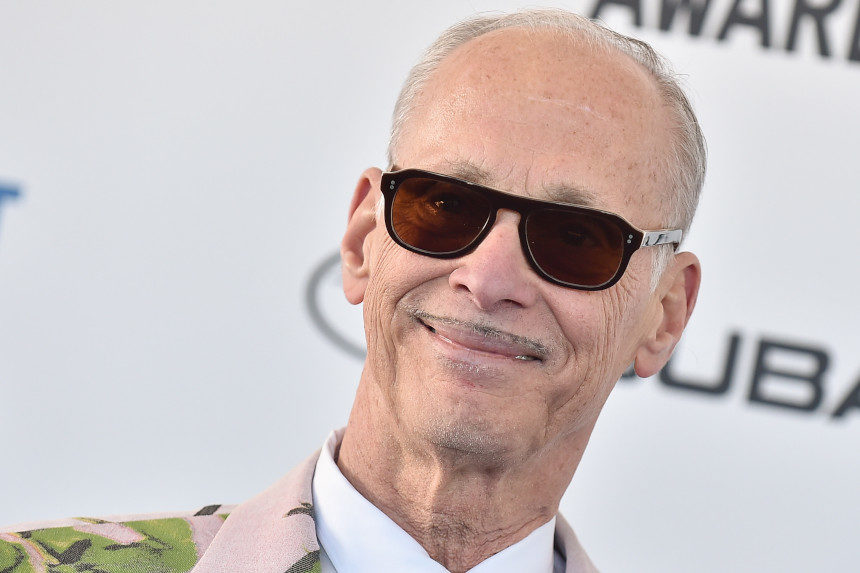When Carnal Knowledge landed in movie theaters 50 years ago this week, the comedy-drama caused a stir with its frank depiction and discussion of sex and sexuality. Although critics were divided (Roger Ebert thought it was better than Mike Nichols’s earlier film The Graduate, while Arthur D. Murphy called it a “superficial and limited probe of American male sexual hypocrisies”), the cast was praised highly and film did decent business. However, one theater manager in Georgia was arrested for showing the film, triggering a case that went to the Supreme Court. Carnal Knowledge is far from the only film that has run afoul of censors, local governments, and blue laws. Here’s a look at how it, and seven other films, broke taboos in the pursuit of cinema (and caused some trouble along the way).
Trailer for Carnal Knowledge (Uploaded to YouTube by Trailer Chan)
1. Carnal Knowledge (1971)
The screenplay for Carnal Knowledge came from Jules Feiffer, the great cartoonist and writer. Nichols stocked the cast with a mix of young and experienced talent (though all are legends today); the film starred Jack Nicholson, Art Garfunkel, Candice Bergen, Ann-Margret, Rita Moreno, and Carol Kane. Ann-Margret received the bulk of the acting accolades, winning a Golden Globe and earning Academy Award and New York Film Critics Circle nominations; Nicholson and Garfunkel were nominated for Globes as well, and Feiffer earned a Writers Guild of America nod.
Much of what shocked audiences and divided critics of the film was the frank and merciless way it treated how men view sex. Nicholson’s Jonathan views women through a misogynistic prism, reducing them in value and only celebrating physical attributes. Garfunkel’s Sandy tries to be more sensitive by contrast, but complains about unfulfilling sex with his wife. While those broad strokes only hint at the dialogue, discussions of casual sex, partner-swapping and more put the film on the radar of conservative factions. In 1972, police in Albany, Georgia seized the film and arrested the theater manager; he was charged and convicted of “distributing obscene material.” On appeal, the Supreme Court of Georgia upheld the conviction, but the U.S. Supreme Court overturned it in 1974; in Jenkins v. Georgia, the court held that nudity itself did not create “obscenity,” nor did discussion of sex.
2. Ecstasy (1933)
Generally regarded as the first non-pornographic film with a sex scene, the Czech film starred 18-year-old Hedy Kiesler, soon to be known as Hedy Lamarr. While young Lamarr did appear nude in the film, those weren’t part of the sex scene. The famous scene focuses only her face all the way through to the scene’s, well, climax. The film was condemned by the Pope (Pius XI at the time) and the Catholic Legion of Decency; it wouldn’t make it to the States for two years, and even then it was banned outright in some places.
3. Night of the Living Dead (1968)
George A. Romero’s Night of the Living Dead plows through the taboo line like a semi hitting a gas station (that one’s for the hardcore fans). The movie manages to pack in cannibalism, matricide, clever critiques of the ongoing situation in Vietnam, and a broadside shot at systemic racism in a tight one hour and 37 minutes. The film also casts a Black man as Ben, the heroic lead, at a time when that was much less common. What’s more, some of the simmering tension in the house surrounded by the living dead is obviously caused by Harry’s unwillingness to accept Ben in a leadership position. Variety indulged in some particularly histrionic pearl-clutching at the time, alluding to the film as “pornography of violence.” On the other side, Roger Ebert, Pauline Kael, and Rex Reed praised it on its own terms as a horror classic. The film went through regional bans and much controversy, but today it’s regarded as a horror landmark and resides in the National Film Registry of the Library of Congress.
The trailer for M*A*S*H (Uploaded to YouTube by Movieclips Classic Trailers)
4. M*A*S*H (1970)
Movie folklore will tell you that Gone with the Wind welcomed swearing to the movies with Rhett’s “Frankly, my dear, I don’t give a damn,” while research tells you that there were plenty of hells and damns on the screen before 1939. However, it’s fairly certain that the first F-bomb in a mainstream American movie was dropped in the war satire M*A*S*H. Ironically, the word occurs during a football scene, as opposed to any war or surgical scenes.
5/6. Bonnie & Clyde (1967)/The Wild Bunch (1969)
Before Bonnie & Clyde, Hollywood violence was often a bloodless affair (or at least minimal, or black and white). Arthur Penn’s film shoved the carnage right into your face in full-on color. While the film’s tone vacillates between comedic and dramatic, the titular duo’s fate is no joke. Even though it’s clearly intended to show the consequences of the pair’s outlaw lifestyle, the film in general and the ending in particular drew howls of protest from some and mountains of award nominations from others (including nine Oscar nods and two wins). Similarly, The Wild Bunch took the violent climax of Bonnie & Clyde and turned it up to 11. The prolonged “Porch Battle” is tremendously direct and tremendously violent. The two films are said to have smashed down the wall for more realistic depictions of violence, a spirit of artistic license that soon resonated from action on into horror films as well.
John Waters introduces the Pink Flamingos trailer (Uploaded to YouTube by gaymoviereviews)
7. Pink Flamingos (1972)
John Waters is known for challenging films, and Pink Flamingos is arguably his breakthrough work. The overall film is so insanely transgressive that it’s a minor miracle that it got made and shown in theaters. Quite frankly, this writer isn’t even sure what he can say about it in this space. Banned in multiple countries and subjected to edits in different territories, the film’s 1997 re-release got hit with an NC-17 rating for “a wide range of perversions in explicit detail.” That said, it’s emerged as an important film in the LGBTQ+ community and drew wide notice for its drag queen lead, Divine.
8. Clerks (1994)
You have films with a single swear word and you have films that almost drew an NC-17 rating for language only. The latter was Clerks, the debut film from New Jersey writer-director Kevin Smith. Smith sold part of his comic collection to raise the $27,000 he needed to make the film, a black-and-white comedic look at one long day in the lives of two twenty-something shop clerks. The outrageous humor and pop-culture-fueled dialogue made it an audience favorite and an award-winner and nominee at Sundance, Cannes, and the Independent Spirit Awards. When the film was acquired by Miramax for distribution, the nudity-free and (nearly) violence-free movie got slapped with an NC-17 solely for the language. After filing an appeal, the film was released with an R with no changes.
Featured image: DFree / Shutterstock
Become a Saturday Evening Post member and enjoy unlimited access. Subscribe now




Comments
Wow! Here’s a group that’s likely never been all grouped together in the same article before, so let’s get started. ‘Carnal Knowledge’ IS a film I’ve never seen that I really should. I’d almost forgotten there was any other film except ‘Tommy’ (4 years later) that Nicholson and Ann-Margret both starred in. Let’s see how obscene it is, or not. Same thing with ‘Ecstasy’ from close to 40 years earlier. Probably one of the last of the ‘Pre-Code’ era.
‘Night of the Living Dead’ I’ve seen on TV, but need to check out in (perhaps) a less censored form, if it was. I just don’t know. Patricia Arquette cleverly incorporated parts of it into her ‘Medium’ series about 10 years ago, I think. Not interested in ‘MASH’ but not knockin’ it either. Same with ‘Pink Flamingos’. ‘Bonnie & Clyde’ yes. Saw it at a special screening at the Egyptian in the mid-10’s. ‘The Wild Bunch’? Forget it. ‘Clerks’ yes. The only thing wrong with it was the language overkill, which was huge. I still like it for all of the good qualities you mention. The pop culture references are dated to anyone under 40 or so, but that’s fine. So is ‘Laugh-In’, except the age is higher.
Most of these films were from the age of ‘New Hollywood’ that ran from 1967-1976 ushered in by Faye Dunaway’s ‘Bonnie & Clyde’ then out with her brilliant ‘Network’. Of course one of the funniest films within that time frame was none other than ‘Myra Brekenridge’ starring the one and only Raquel Welch. She’s as funny as she is beautiful and sexy. The real comedy treat with her is the way she delivers her lines. It nearly bankrupted 20th Century Fox in 1969-’70, but who cares? She was worth it. That film is something unto itself for a future feature feature here.